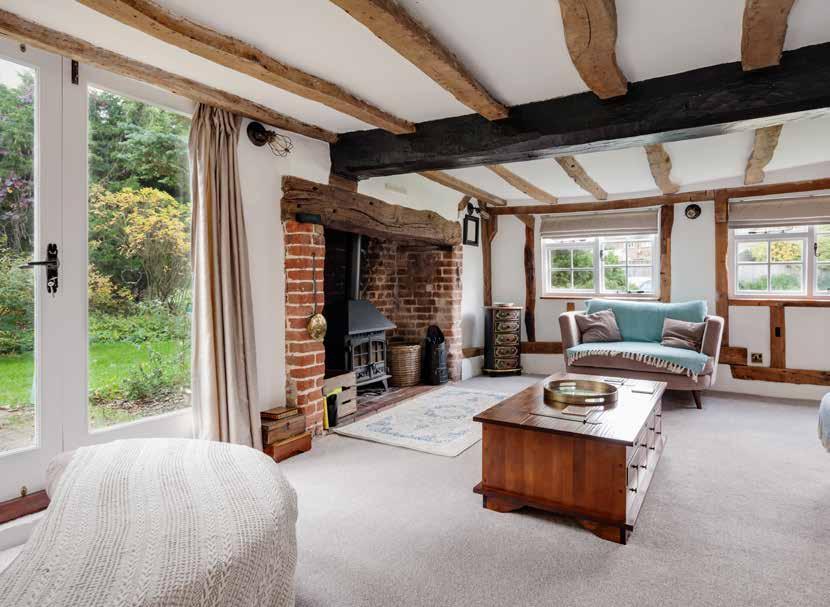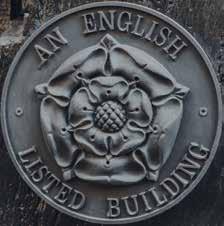
3 minute read
Custodian of a Listed Building?
We’re honoured to handle some of the finest character and period property sales throughout the UK, many of which are of special architectural or historical interest and have listed building status to reflect this. Listed building status is conferred by Historic England, which is a government body sponsored by the Department for Culture, Media and Sport. When an appropriate building is identified and given the status, the building is then considered to be of national importance and is given extra legal protection within the planning system.
There are three categories of listed status for buildings in England and Wales:

• Grade I: buildings of exceptional interest
• Grade II*: particularly important buildings of more than special interest
• Grade II: buildings that are of special interest
The custodians of these properties have often been so for a generation, and during that time have carried out works, whether general maintenance or considerable structural alterations. This is of course their prerogative; but often, and innocently, we are finding that little to no consideration has been given to the listed status and the necessary consultation that should take place with local authority and conservation specialists.
Property transactions are coming under more scrutiny than ever, with legal professionals and lenders particularly under pressure to reassure all parties of the historical legitimacy of a property. Furthermore, it is now essential that sellers and their representatives are transparent, and any known issues should be presented to interested parties at the earliest opportunity. This has been highlighted recently, with several legal cases being made against sellers who did not declare material facts that may have influenced a purchaser’s decision-making.
A good level of documentation must be compiled throughout the tenure of ownership of any property, but with listed properties and the sensitivities attached, extra care is required.


During the early stages of market preparation, unless already known/ documented, we recommend a full planning review via experienced planning consultants and commentary from building surveyors if appropriate. This will highlight any areas of concern that should be declared or dealt with retrospectively. A good solicitor should also be appointed early to advise on the legal consequences and resources that should be considered to smooth the process, such as indemnity policies, for example.
Not only are there consequences that could impact a sale, but preventing unlawful works is a very important part of heritage protection. It is why carrying out works without obtaining the necessary Listed Building Consent is a criminal offence. In the worst cases, prosecution could lead to total demolition of works, an unlimited fine or even a prison sentence. It is also worth noting that even after a sale has been completed, the party who either carried out the work or instructed it will still be liable, together with the purchasers who, as the new owners, could be subject to the obligations of a Listed Building Enforcement Notice.
Fortunately, at Fisher German, we are extremely well placed to offer early guidance, with experienced professional agents able to establish a route to market which best positions the seller. There are no benefits in trying to mask known issues; it will only delay the sales process and likely create additional costs and barriers further down the transactional line. Not to mention the lack of trust between parties that may creep in.
If
When considering works on a listed building, understanding its historic significance and the impact any planned works may have upon this is crucial. Specialist advice alongside early engagement with the Conservation Officer at the Local Planning Authority is highly recommended to help ensure the process is as smooth as possible. Obtaining Listed Building Consent can feel like an onerous process where the level of detail required as part of any submission can be substantial, but it is an important process to satisfy as it can otherwise have considerable consequences. The requirement for Listed Building Consent usually covers the internal and external fabric of the building, alongside any fixtures or curtilage to listed buildings, and helps to ensure that elements which are of significance can be preserved.
Where works have been undertaken without consent, then this can cause issues as part of the conveyancing process and potentially prevent the sale of a property. Those who carried the works out and those instructing the works can be prosecuted. There is also the risk of an owner receiving a Listed Building Enforcement Notice seeking to achieve restoration or reduce the impacts of unlawful works. This can be served upon the owner of the building even if the works were carried out by the previous owner.
Where an owner is seeking to rectify a situation about unconsented works, it would be prudent to seek professional advice to understand what might be in breach and how this may be remedied. This would typically involve the input of planning and heritage consultants alongside seeking specialist legal advice.











